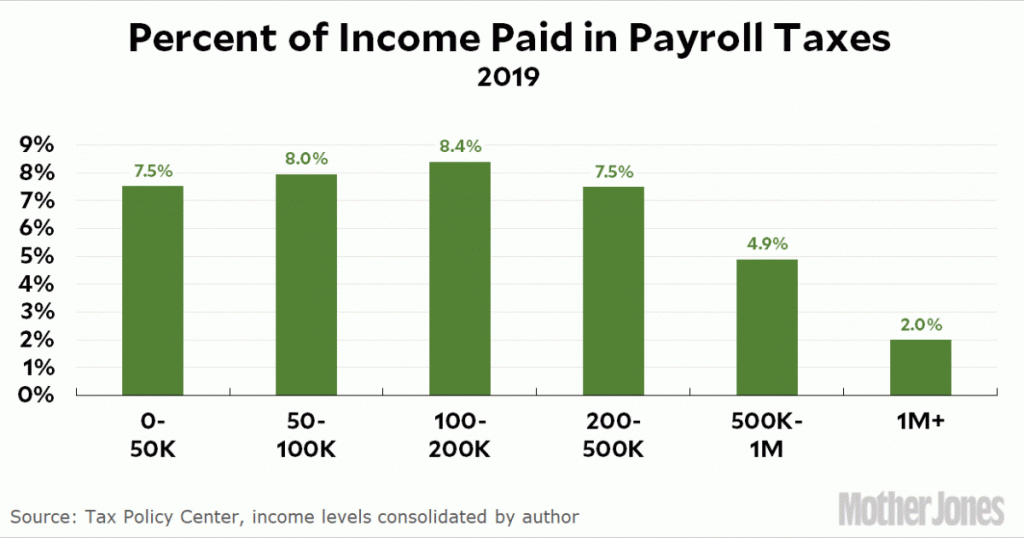Is a Payroll Tax Cut a Good Idea?
Yesterday President Trump announced that he was considering a big slug of fiscal stimulus to keep the economy going in the face of the coronavirus epidemic. And what would this stimulus consist of? A tax cut, of course.
However, the tax cut he has in mind is the payroll tax that funds Social Security and Medicare. This is not a new idea. You may recall that Barack Obama initiated a payroll tax cut as part of his follow-up stimulus package in 2010. His reasoning was simple: payroll taxes are paid mostly by the poor and middle class, so when you cut those taxes you’re putting money directly into the hands of people who need it and will spend it right away. It was a good idea.
But is cutting payroll taxes still a good idea today? Let me put it this way: it’s certainly not the worst idea the Trump administration could have come up with. The problem is that a tax cut is only effective as stimulus if the problem is that people lack money. In 2009 that was indeed the case. Today it’s not. Consumers have plenty of money, but the coronavirus will (probably) make them reluctant to spend it. It will also make them afraid to leave the house. A payroll tax wouldn’t change either of those things: if consumers get more money, most of it is likely to go straight to savings.
However, it’s important that if Congress does approve a payroll tax cut, it needs to be done right. The cut needs to be in the form of a certain number of percentage points (say, from 6 percent to 4 percent) so that the middle class really does benefit more than the rich. And the reduced flow of taxes to Social Security and Medicare needs to be made up by contributions from the general fund. It would be stupid to use payroll taxes as a stimulus with a side effect of making Social Security go bankrupt sooner.
So what would be better than a payroll tax cut? That’s not easy to say for a short and temporary shock that’s going to hit both the supply side and the demand side. My guess, however, is that we need to do our best to target it toward those who are going to be most affected by the coronavirus. For example, the feds could promise to pay 100 percent of all testing and hospitalization due to COVID-19. That would be a sizeable sum and would precisely help those who need it most. Since a lot of people are likely to lose their jobs thanks to coronavirus fears (think cruise ship workers, convention organizers, airline workers, etc.), a temporary increase in unemployment benefits would probably be useful. And since the elderly are the hardest hit by the coronavirus, it might be wise to come up with something that benefits them. Maybe a temporary reduction in Medicare copays and hospitalization limits?
It’s also worth noting that not everything has to be precisely targeted. We are forever talking about infrastructure spending, and this is the kind of thing that could most likely be increased without running any risk of spreading the virus. The key thing, as always, is to pick projects that can be started quickly. By now we really ought to have a few in mind, shouldn’t we?




